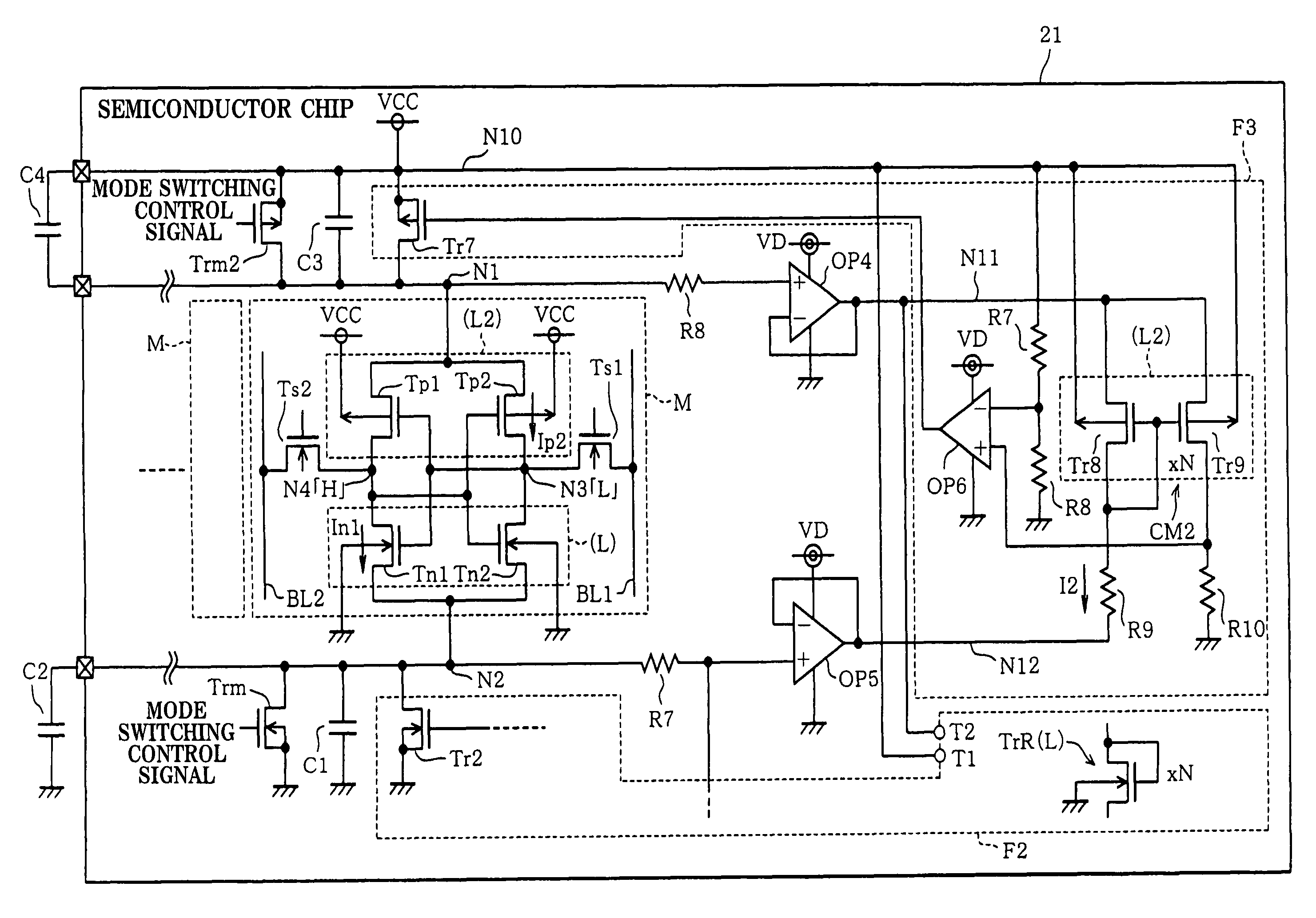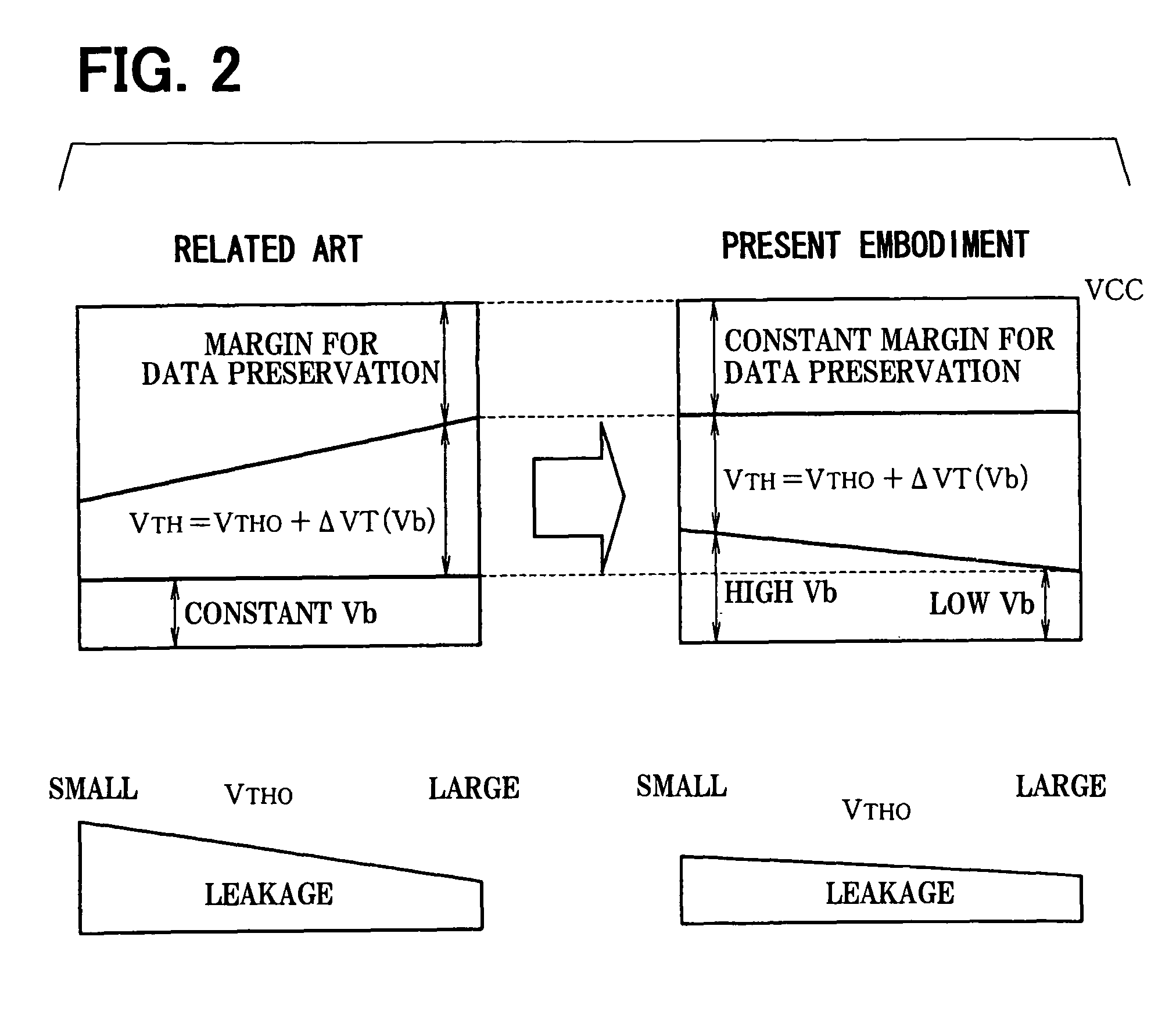Semiconductor memory device
a memory device and semiconductor technology, applied in the direction of information storage, static storage, digital storage, etc., can solve the problems of excessive data preservation margin, restricted standby current consumption, and associated standby current consumption
- Summary
- Abstract
- Description
- Claims
- Application Information
AI Technical Summary
Benefits of technology
Problems solved by technology
Method used
Image
Examples
first embodiment
[0030]Referring to FIG. 1 and FIG. 2, a first embodiment involves a semiconductor memory device that employs a static random access memory (SRAM) cell as will be described below.
[0031]FIG. 1 is a circuit diagram showing the electrical constitution of a fully complementary metal-oxide semiconductor (CMOS) type SRAM and a regulation circuit that regulates a source potential. The semiconductor memory device is included in a system that may be mounted in a vehicle and that operates while being externally powered with a predetermined voltage such as, for example, 5 V.
[0032]An exemplary semiconductor memory device may be embodied as semiconductor chip 1. Numerous memory cells M are formed as a matrix on, for example, a thin-film silicon-on-insulator (SOI) substrate (not shown). FIG. 1 shows one of the memory cells M. The memory cell M preserves data when having a memory cell supply voltage VCC of, for example, 1.2 V applied thereto. The memory cell M includes an inverter pair including a ...
second embodiment
[0064]FIG. 3 shows a second embodiment. The same reference numerals are assigned to components identical to those of a first embodiment. A redundant description will be omitted, and a difference will be described below.
[0065]As shown in FIG. 3, a regulation circuit F2 is formed in a semiconductor chip 11, which, for example for comparison purposes, corresponds to the semiconductor chip 1 and the regulation circuit F described herein above. The regulation circuit F2 has an electrical constitution described below in addition to the electrical constitution of the regulation circuit F. An n-channel MOS transistor Tr5 is formed in place of the resistor R2. The drain of the MOS transistor Tr5 is connected to the resistor R1, and the source thereof is connected to a ground. A resistor R4 and the drain and source of an n-channel MOS transistor Tr6 are connected in series with one another between the node N1 and ground.
[0066]Resistors R5 and R6 for voltage division are also connected in seri...
third embodiment
[0070]FIG. 4 to FIG. 5B show a third embodiment. A difference from the above described embodiments is that a bias voltage is applied to the node connected to the sources of the n-channel MOS transistors and also to the node connected to the sources of the p-channel MOS transistors included in each of the memory cells. Thus, a third embodiment is intended to exert an effect of reduction of leakage currents.
[0071]FIG. 4 shows a semiconductor chip 21, which, for example for comparison purposes, corresponds to the semiconductor chips 1 and 11. The regulation circuit F2 described in relation to the above described embodiment is formed in the semiconductor chip 21, and designed to apply a voltage to the node N2. In the above described embodiments, a connecting terminal T1 via which power is fed to the resistors R5 and R6 and a connecting terminal T2 via which power is fed to the resistor R1 are connected to the power feeding node N1 through which a supply voltage VCC is fed. In the presen...
PUM
 Login to View More
Login to View More Abstract
Description
Claims
Application Information
 Login to View More
Login to View More - R&D
- Intellectual Property
- Life Sciences
- Materials
- Tech Scout
- Unparalleled Data Quality
- Higher Quality Content
- 60% Fewer Hallucinations
Browse by: Latest US Patents, China's latest patents, Technical Efficacy Thesaurus, Application Domain, Technology Topic, Popular Technical Reports.
© 2025 PatSnap. All rights reserved.Legal|Privacy policy|Modern Slavery Act Transparency Statement|Sitemap|About US| Contact US: help@patsnap.com



